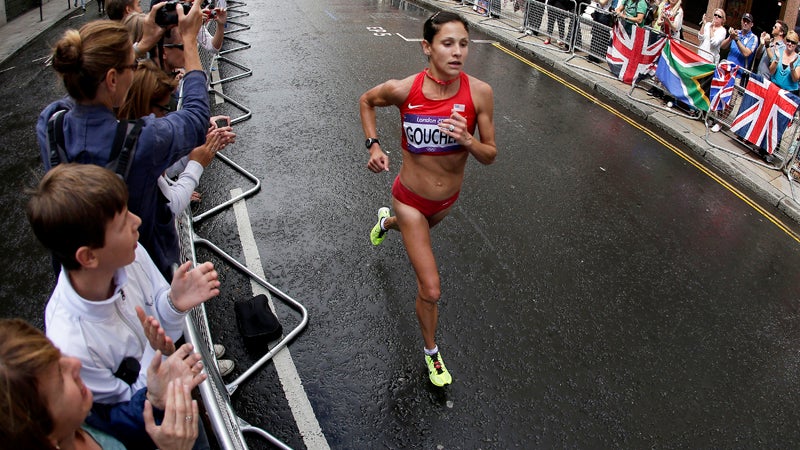Meb Keflezighi sporting a pair of Skechers at this year’s Boston Marathon was like Nicole Kidman showing up at the 1997 Oscars in her John Galliano dress—only better.
Whereas Galliano’s profile went global (while Kidman went home empty-handed), for Keflezighi and Skechers, Boston proved to be an all-out win-win: Keflezighi, 39, unexpectedly won the marathon (in his ), and Skechers even more unexpectedly rebranded itself as a performance-shoe up-and-comer. In fact, not even five years ago, it would’ve made just as much sense (not!) if Kidman had worn a pair of Skechers to the Oscars. After all, Skechers’ most famous endorsers ‘till recently were and Joe Montana.
And then came the news earlier this week—while Nike and Adidas were still busy eating their respective hearts out—that two-time , 35, signed on with the 22-year-old Manhattan Beach, California-based shoe company. “Between the people at Skechers’ Performance Elite Team, the shoes they’re working on, and the fact that they’d support me without any strings attached,” says Goucher, “it really was a no-brainer.”
Prior to 2010, Skechers was a casual-shoe company. But then it started seeing room for growth in the $7 billion performance-shoe industry. That helps explain why it (who designed the Grant Hill II for FILA back in 1996 and who debuted his own shoe company, Brandblack, last year) as part of its design team. It’s also probably the reason behind Skechers’ exploration into . Once the company had the designers, and enough ideas for a performance-shoe line, it could start bringing in athletes. Athletes who could endorse and also contribute to product development.
For Keflezighi and Skechers, Boston proved to be a win-win: Keflezighi, 39, unexpectedly won the marathon (in his GoMeb Speed 3s), and Skechers even more unexpectedly rebranded itself as a performance-shoe up-and-comer.
“We had a strong point of view on our mid-foot strike technology, and how it could help Meb with his form—the rest is history now,” say Skechers’ Public Relations Director Jolene Abbott. So when Keflezighi chose not to renew his Nike contract in 2010, thinking they weren’t offering him enough money, he signed a six-figure deal with Skechers in 2011, then re-upped in 2013. As for Goucher, who’s been running in the GoRunRide3s, the new partnership just made sense. “We met with her as she was looking for new partners, and we all had the same goals in mind. It’s definitely a two-way street,” says Abbot.
That “two-way street” would be the fact that neither Keflezighi’s nor Goucher’s contract features the dreaded “reduction clause.” If Keflezighi or Goucher don’t perform well in races, Skechers doesn’t dock them any pay. Even better—and here’s the other contract watershed—Skechers allows them to wear logos of other corporate sponsors. In track and field especially, this demand of exclusivity is de rigeur and it’s long hindered the incomes of the athletes. No more.
“My arrangement is highly unusual as I have two major sponsors,” says Goucher, who in March signed with Oiselle, the upstart Seattle-based women’s running-apparel company. “I’m proud to be the first professional runner to have such an arrangement and I genuinely hope it brings about a change in our sport and opens up more opportunities for track and field athletes. I’m very proud to have signed with two companies that were willing to think outside the box and do things in an unconventional way. I hope this is the beginning of a change in the running industry.”
So while their athletic footwear may not be what revolutionizes the performance-shoe industry, Skechers’ contracts could certainly change the way the game is played.


